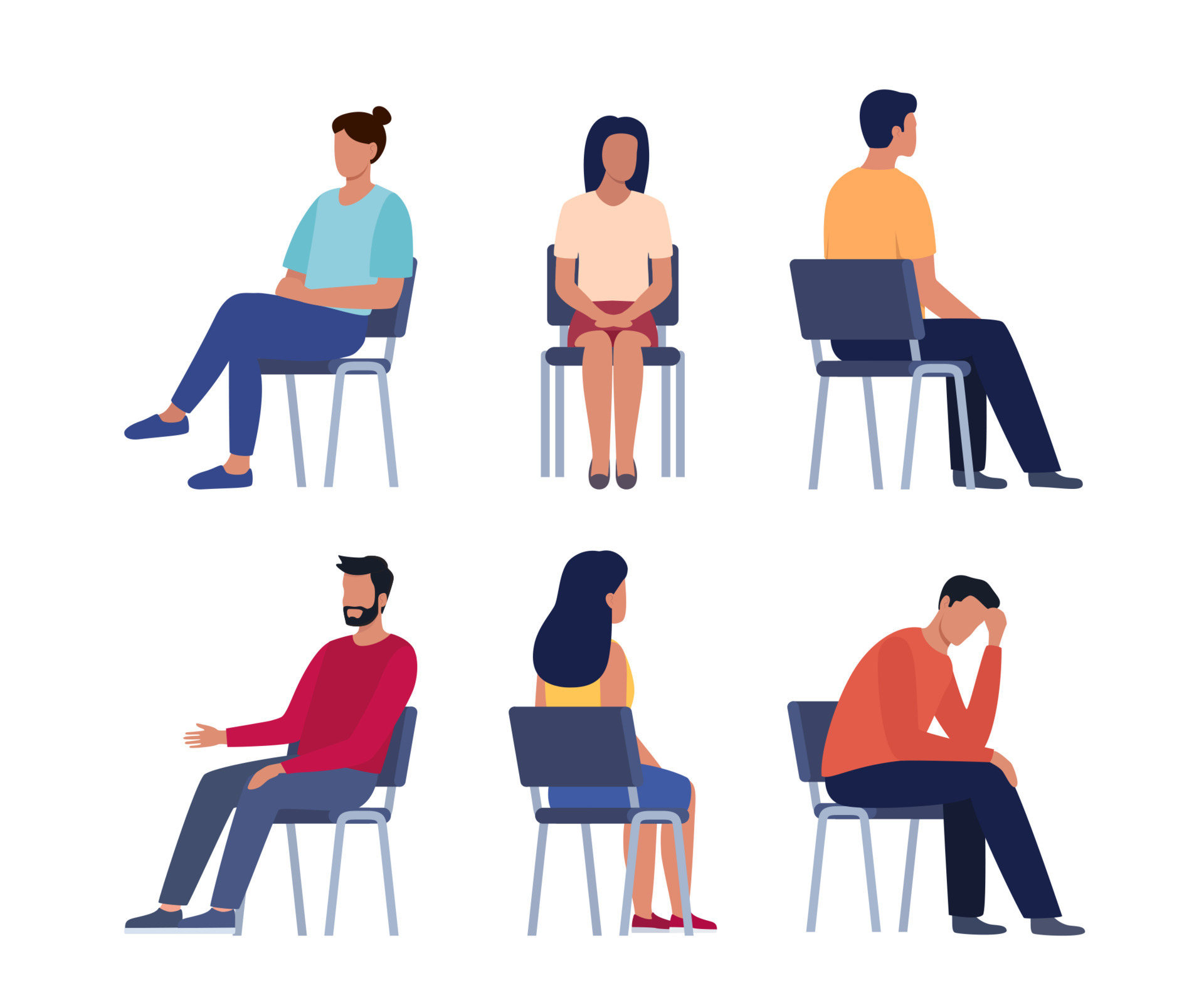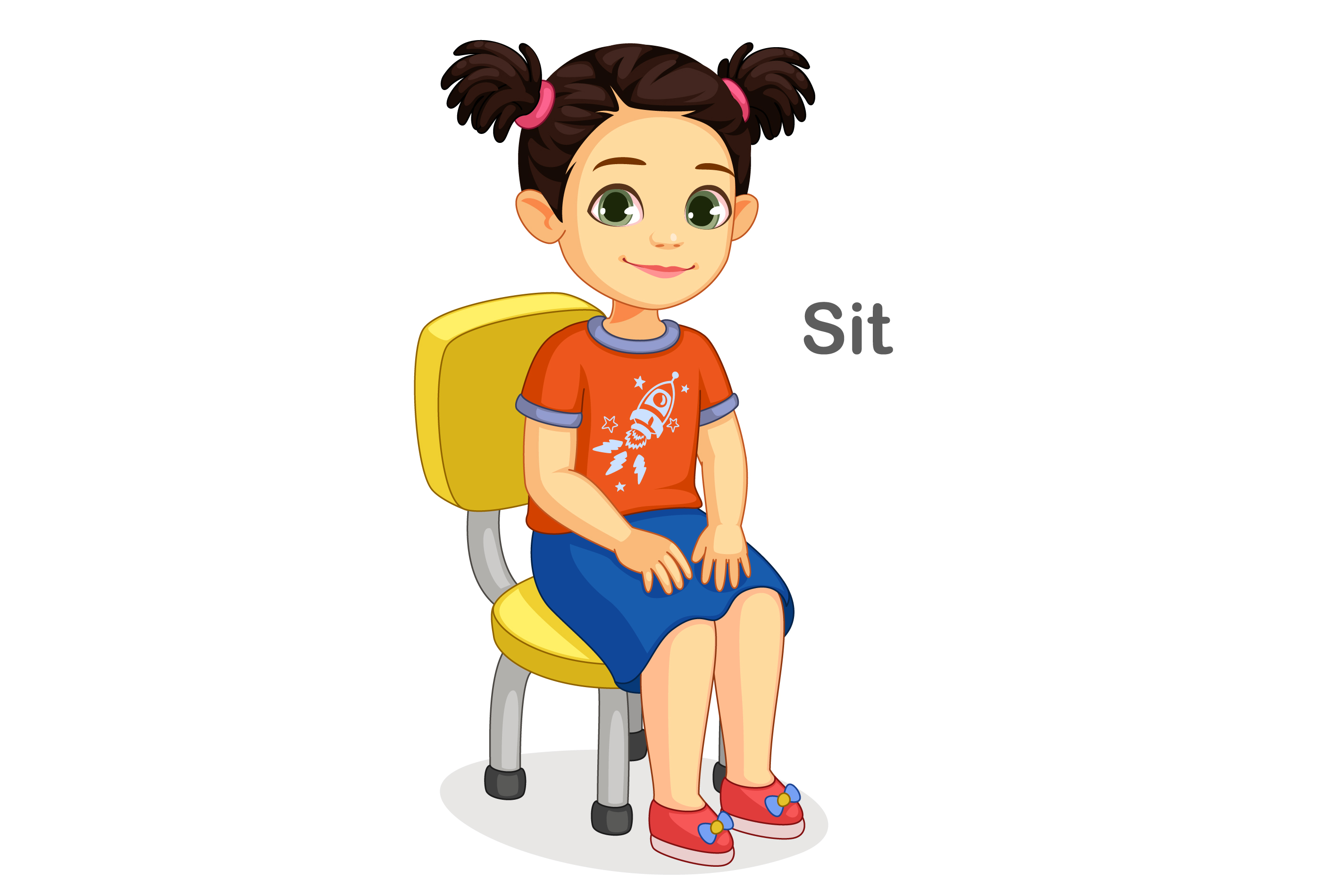The Act of Sitting: Set On The Chair

The act of sitting, seemingly simple and mundane, is a complex interplay of mechanics, posture, and balance, subtly shaping our bodies and influencing our well-being. This seemingly effortless act involves a delicate orchestration of muscles, bones, and ligaments, and its long-term effects on our physical health are profound.
Posture and Balance
Sitting on a chair requires maintaining an upright posture, a delicate balancing act between gravity and the supporting forces of the chair. Our spine, the central pillar of our body, aligns itself with the chair’s back, distributing weight evenly across the seat. The muscles of the back, abdomen, and legs engage to maintain stability and prevent slouching. The interplay of these forces creates a dynamic equilibrium, ensuring we remain comfortably seated.
Types of Chairs and Their Impact on Posture
Different types of chairs exert varying influences on our posture, impacting the distribution of weight and the engagement of muscles.
- Office Chairs: Often equipped with adjustable features like lumbar support, armrests, and seat height, these chairs are designed to promote ergonomic posture. The adjustable features allow individuals to customize the chair to their specific body shape and size, reducing strain on the back and promoting good posture.
- Dining Chairs: Typically less adjustable than office chairs, dining chairs often have a fixed back and seat height. While they may not provide the same level of support as office chairs, they still require muscle engagement to maintain balance and upright posture.
- Sofas and Armchairs: These chairs are designed for relaxation and often lack back support, leading to slouching and poor posture. The lack of support can also contribute to muscle fatigue and discomfort over time.
The Chair in Everyday Life

The chair, a seemingly simple object, holds a profound place in our everyday lives. It transcends its function as a mere piece of furniture, becoming a silent witness to our most intimate moments, our public interactions, and our deepest reflections. Its presence shapes our experiences, defines our spaces, and influences our behaviors in ways we may not always consciously recognize.
The Chair in Various Contexts, Set on the chair
Chairs serve a multitude of purposes, adapting to the diverse needs and activities that fill our days. From the humble kitchen chair where we gather for meals to the grand throne symbolizing power and authority, chairs play a significant role in shaping our social interactions and defining our identities.
- Work: The office chair, a symbol of productivity and focus, supports us through long hours of work, providing a comfortable and ergonomic space to concentrate and complete tasks. It serves as a focal point for our professional lives, often reflecting our status and role within an organization.
- Leisure: The armchair, a haven of relaxation and comfort, invites us to unwind and indulge in leisure activities. It is a space for reading, contemplation, or simply enjoying a quiet moment of solitude. Its soft cushions and supportive frame offer a sense of security and contentment.
- Social Gatherings: The dining chair, a symbol of shared meals and convivial conversation, brings people together around a table. It facilitates social interaction, fostering a sense of community and shared experience.
- Rituals: The ceremonial chair, often imbued with symbolic meaning, holds a special place in rituals and ceremonies. It signifies authority, power, or a specific role within a particular tradition.
The Chair as a Space Definer
Beyond its functional role, the chair also plays a crucial role in defining and shaping spaces, both public and private. It can create a sense of intimacy or formality, depending on its design and placement.
- Public Spaces: In public spaces, chairs can be used to create waiting areas, seating zones, or designated gathering spots. They can define pathways, create barriers, or encourage interaction.
- Private Spaces: In our homes, chairs contribute to the overall ambiance and functionality of each room. They can create a cozy reading nook, a comfortable space for conversation, or a designated work area.
Designing for Contemporary Needs
In today’s rapidly evolving world, the need for innovative and adaptable chairs is more pressing than ever. Many contemporary challenges, such as the increasing prevalence of remote work, the rise of shared living spaces, and the need for greater sustainability, require new approaches to chair design.
- Multifunctional Chairs: One potential solution is the development of multifunctional chairs that can adapt to different needs and contexts. These chairs could be designed to fold, stack, or transform into different configurations, maximizing space efficiency and adaptability.
- Sustainable Materials: Another crucial aspect of contemporary chair design is the use of sustainable materials. Chairs made from recycled materials, renewable resources, or biodegradable materials can minimize environmental impact and promote a more circular economy.
- Ergonomic Considerations: With increasing focus on health and well-being, ergonomic considerations are essential in chair design. Chairs that promote good posture, reduce strain, and enhance comfort are crucial for both work and leisure activities.
Set on the chair – Setting up a play area for your little one? Don’t just throw a random chair in there, get them something that’ll make them smile! A Disney Pixar Cars table and chair set is a great way to make playtime more exciting.
It’s not just a chair, it’s a gateway to their imagination, letting them race their favorite cars and create their own adventures.
Setting a little one up with their own chair can be a big step in their development. They get a sense of independence and a designated space for their activities. A great option for a first chair is the nickelodeon paw patrol activity table and chair set , which is perfect for creative play and snack time.
With a chair of their own, kids can start to feel more grown-up and comfortable in their own space.
